#To Love: Takehisa Yumeji Story
Text
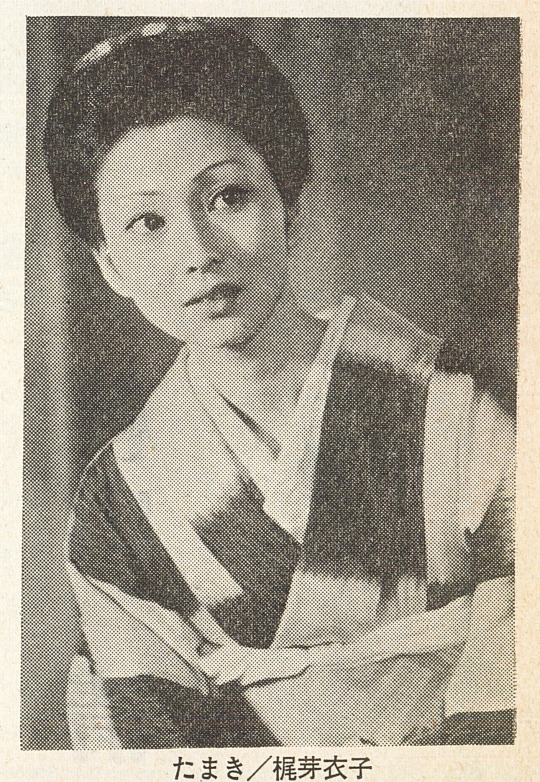
Meiko Kaji (梶芽衣子) in To Love: Takehisa Yumeji Story (竹久夢二物語 恋する), 1975, directed by Koichi Saito (斎藤耕一).
Scanned from Gekkan Shinario (月刊シナリオ), November 1975.
#Meiko Kaji#梶芽衣子#Kaji Meiko#Koichi Saito#Gekkan Shinario#To Love#月刊シナリオ#斎藤耕一#竹久夢二物語 恋する#magazine#scanned by me#To Love: Takehisa Yumeji Story
39 notes
·
View notes
Text
Everything You Want to Know About “Kawaii” Culture- Kawaii Fridays
Originally posted to www.onlyfunthings.org on June 01, 2018
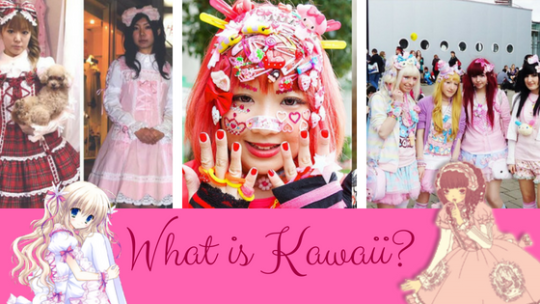
Ciao lovelies, Lunaria here! Today for Kawaii Friday I though I’d make a comprehensive post detailing all you could ever want to know about “kawaii culture”; where it came from, naming some fashions within it (I’ll do more detailed posts on each fashion later), giving some resources on good places to begin reading more/ youtubers to follow/bloggers/Instagrammers, and even telling some about my own personal experiences with kawaii culture.
Personal Experience with Kawaii Culture
As you may have noticed, myself and OFT are highly influenced by Kawaii Culture. Personally, I’ve been into kawaii culture since I was about 13 and a friend told me about Anime, Vocaloids, and the word “Kawaii.” Later I, thanks to the internet, discovered fashions like EGL, Decora, Hime Gyaru, Fairy Kei, and many others. My lifestyle and fashion style were heavily influenced by all these fashions and kawaii culture in general, and reflect these influences.
But enough about me, let’s talk about how it all started!
History of Kawaii
Etymology speaking, the word “Kawaii” is believed to have come from the word “Kawayushi,” a word dating back to the Taisho era (1912-1926) meaning loveable, shy, and small.
A big influence on what is seen as “Kawaii” dates back to the first shoji and kawaii illustrator, Yumeji Takehisa, in 1914. Takehisa merged Eastern and Western art styles in his Chiyogami (flat woodblock print patterns on paper) and used the word “kawaii” to describe them. He was one of the first to use wide, round eyes in his works.
Another big influence on “kawaii” was shojo manga. Shojo Manga (Illustrated stories of a girlish nature), was said to begin with illustrator Katsuji Matsumoto, with the first Shojo manga girl being Kurukuru Kurumi-chan. She had big round eyes and a soft round face. (as seen in the pictures below). Kurumi-Chan was used as a source of encouragement for Japanese people during WW2.
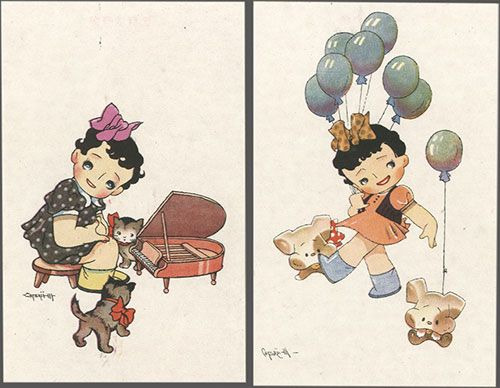
Moving forward into more modern influences, as shojo manga developed we also saw the rise of Mahou Shojo (magical girl) genre of manga and anime. Characters like Sailor Moon brought forth the idea that kawaii could include flaws, and strong girls, but still maintained the air of childish cuteness.

What are some Fashions that are in the Kawaii Culture?
Some fashions in the Kawaii Culture include:
-EGL (Elegant Gothic Lolita). This style has evolved over the years to include Sweet, Sailor, Classic, and many other sub-styles, but it’s root was gothic Lolita fashion. Hence where it gets it’s name. For more info, see THIS post.
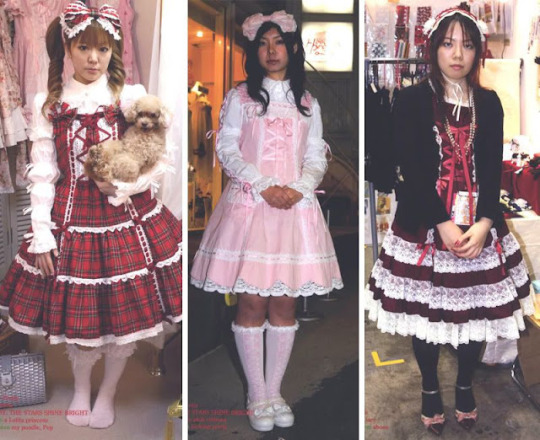
-Decora. A style dedicated to lots and lots of accessorizing.

-Fairy Kei. Lots of sweet pastels and childish themes.

These are pretty central to the Kawaii culture, of course there are more styles, but I’ll get into that later.
Some Good Resources for More Research:
Some Good Bloggers/YouTubers/Instagrammers:
Thanks for reading! I hope you learned a lot about Kawaii Culture today!
Remember to Stay Awesome and Love Yourself!

#agere class#agere classroom#agere daycare#agere school#agere#age regression#sfw agere#sfw littlespace#age regressor#sfw age regression#agereg#age dreaming#sfw little blog#agere blog#Ciao lovelies#agere learning
9 notes
·
View notes
Text
Cosmos Troup "Yumechidori" distribution
https://kageki.hankyu.co.jp/revue/2021/yumechidori/index.html
Directed and written by Yuka Kurita (This is her first work)
Cast:
Yujiro Shirasawa (Film director)/ Yumeji Takehisa (Painter): Sora Kazuki
Rena Akabane (Actress) / Takamki (Yumeji’s wife): Mineri Amairo
Hikono (A pure student who falls in love with Yumeji) :Hibari Yamabuki
Oyo (Model) :Shiho Mizune
Minato Saijo (An actor)/ Seiji Togo (A student who cares and loves Tamaki): Yuse Anon
Story:
The time is Showa era in Japan. A famous film director Yujiro Shirasawa (Sora Kazuki) and an actress Rena Akabane (Mineri Amairo) are married but without registration.
Shirasawa is trying to create a new film to make Yumeji Takehisa(Sora Kazuki) the subject matter. Yumeji Takehisa is a famous painter in Taisho era in Japan, who had numerous romances with a lot of women.
Yumeji was married with Tamaki(Mineri Amairo), a spirited woman who is senior to Yumeji, however, he fell in love with a pure student Hikono (Hibari Yamabuki).
As Shirasawa shot the film, he gradually immerses in Yumeji’s life...
My report:)
This is a really impressive “film”, rather than a musical. I can’t believe that this is Ms. Yuka Kurita’s first work in Takarazuka! She understands Sora Kazuki and Mineri Amairo’s strength, and also what musical we fan would like to see with Sora!
Every member played very well, but the heroin Mineri-chan was the best actress in this act for me. She played two roles- One is Shirasawa’s wife without resisration. The other is Tamaki, who is a key role of this stage.
Tamaki is not a typical musumeyaku character in Takarazuka. There’s something about her that’s just plain sexy with a black kimono and vivid red lips...
Her love to Yumeji is much more like “mad”. The relationship between Yumeji and Tamaki is a mixture of “love and hate”.
Yumeji violates her when they quarrel (unfortunately this is the era which husbands have “power” in family). Surprisingly he kisses her just after he hit her! This is why I express their love “mad” and “love and hate”... Their act in this scene was quite convincing...
Furthermore, Tamaki’s love becomes much mad while Yumeji falls in love with a pure student Hikono, who wants to learn arts under Yumeji. Actually she never felt jealousy to anyone even her husband made romances with other women (at least I felt so) because she knew that she is the only model of Yumeji’s work and believed that Yumeji could create nothing wihout her. However, she finally noticed that he drew a portrait of a woman whose model is Hikono...
Mineri-chan is a typical cute musumeyaku, however, she surprised us with her act as Tamaki in this play. It was very nice to hear her beautiful singings:)
There are three women of destiny for Yumeji: Tamaki, Hikono, and Oyo. All of them have different features. Tamaki is a wife who had a baby with him. She’s really a spirited lady who could build a relationship pf equality with Yumeji. Hikono has a completely opposite nature to Hikono. Yumeji never violates and even quarrels with Hikono, and shows relaxing face... Oyo is expressed as uneducated but a beautiful model. How nice it is that various musumeyaku have their impressive scenes!
Other than musumeyaku, I really love otokoyaku who can play middle aged guys well! In this play, Ritsu Wakato plays the father of Hikono...You may not believe she is in the 9th year in Takarazuka! She is enough dignified and looks completely senior to Sora Kazuki (actually she’s 3 years younger than Sora) lol Of course she has a commanding presence in the play, but also shows affection to his daughter;(
Oh I should not forget to refer to the finale!! It’s full of “typical gorgeous Takarazuka show”!! I’m sure all audience get moved with Sora and Mineri’s beautiful songs and dance!!
I can’t believe that there will not be Blu-ray sold. All the audiences cannot wait to the broadcast on Skystage. I can’t wait to watch the next stage of Soragumi<3
Good news! From May 12th, Takarazuka’s performances will start again!
FYI:
Yumeji’s works: https://pl.pinterest.com/japanesemasters/takehisa-yumeji-1884-1934/
Kurofuneya (One of the most important work by Yumeji. It’s said that the model Oyo): http://yumeji.or.jp/kurofuneya.html
13 notes
·
View notes
Text
A3 Human Character
Planning
Inspiration
My initial plan for the human character was something capable for sword action test but according to the given time scope and my skill level, the plan deems too ambitious. One day, I was watching “The Night Is Short, Walk on Girl” animated feature film in 2018.
youtube
The film was about a strange story of a night a young female university student experienced. Although the time was not specified the style and setting had strong taste of 1960s student culture.
Research
The character designer Yuuske Nakamura is influenced by Japan’s 1960′s Illustrator, comic artist Seiich Hayashi both can be classified in the liniage of Japanese girls illustration rooted to Yumeji Takehisa. They are well known by the style of slender, plant-like girls figures.

Given inspiration, Japanese girls illustration style and 60s, atmosphere, I came up with the 60s iconic fashion model and dress. Twiggy wearing Mondrian dress.
My character was set as 60s first year university university girl who loves fashion and her new urban life.
Deign


0 notes
Photo

Meiko Kaji (梶芽衣子) and Kinya Kitaoji (北大路欣也) in To Love: Takehisa Yumeji Story (竹久夢二物語 恋する), 1975, directed by Koichi Saito (斎藤耕一).
Scanned by me.
meikokaji.net
#Meiko Kaji#梶芽衣子#Kinya Kitaoji#Koichi Saito#To Love#Takehisa Yumeji#北大路欣也#竹久夢二物語 恋する#斎藤耕一#lobby card#scanned by me
39 notes
·
View notes
Photo
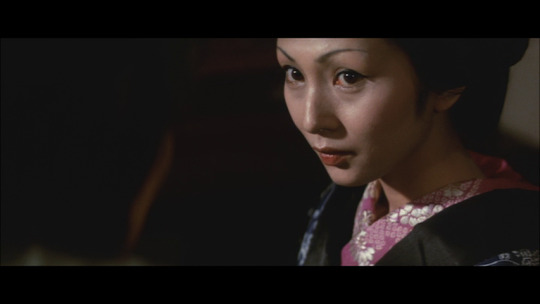
Meiko Kaji (梶芽衣子) in To Love: Takehisa Yumeji Story (竹久夢二物語 恋する), 1975, directed by Koichi Saito (斎藤耕一).
30 notes
·
View notes
Photo

Meiko Kaji (梶芽衣子) and Ryoko Nakano (中野良子) in To Love: Takehisa Yumeji Story (竹久夢二物語 恋する), 1975, directed by Koichi Saito (斎藤耕一).
Scanned by me.
meikokaji.net
#Meiko Kaji#梶芽衣子#Ryoko Nakano#Koichi Saito#To Love#Takehisa Yumeji#中野良子#竹久夢二物語 恋する#斎藤耕一#lobby card#scanned by me
23 notes
·
View notes
Photo
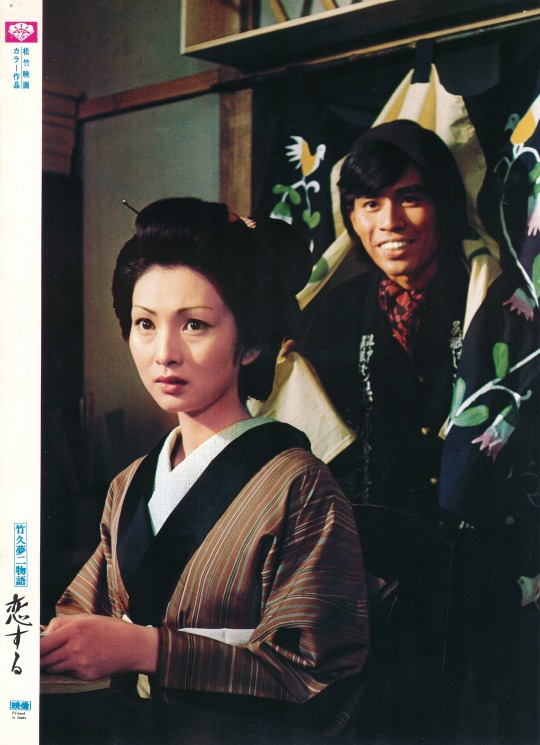
Meiko Kaji (梶芽衣子) and Yoshitaka Tamba (丹波義隆) in The Story Of Takehisa Yumeji: To Love (竹久夢二物語 恋する), 1975, directed by Koichi Saito (斎藤耕一).
Scanned by me.
#Meiko Kaji#梶芽衣子#Koichi Saito#Yoshitaka Tamba#To Love#斎藤耕一#The Story Of Takehisa Yumeji: To Love#竹久夢二物語 恋する#丹波義隆#lobby card#scanned by me
38 notes
·
View notes
Photo
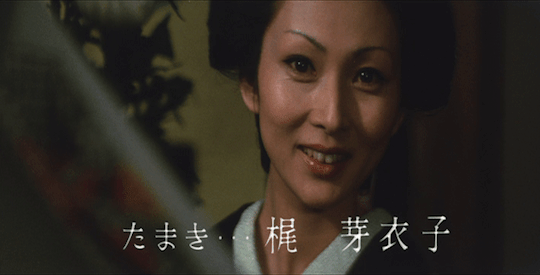
Meiko Kaji (梶芽衣子) in To Love: Takehisa Yumeji Story (竹久夢二物語 恋する), 1975, directed by Koichi Saito (斎藤耕一).
Taken from the trailer, which I have uploaded here: https://youtu.be/FFx6F5snCqo
http://meikokaji.net/
15 notes
·
View notes
Photo

Meiko Kaji (梶芽衣子) in To Love: Takehisa Yumeji Story (竹久夢二物語 恋する), 1975, directed by Koichi Saito (斎藤耕一).
Scanned from a promotional booklet for the film.
#Meiko Kaji#梶芽衣子#To Love#Koichi Saito#竹久夢二物語 恋する#斎藤耕一#scanned by me#press photo#Takehisa Yumeji#umbrella#kimono
84 notes
·
View notes